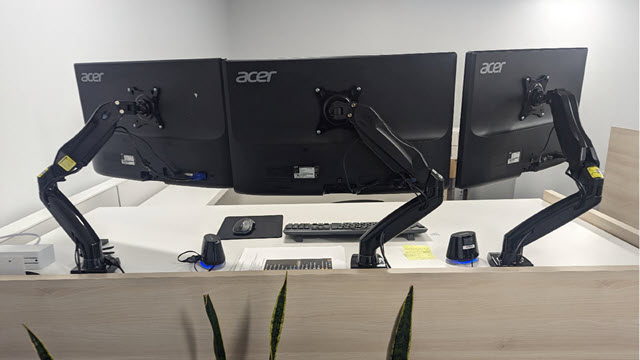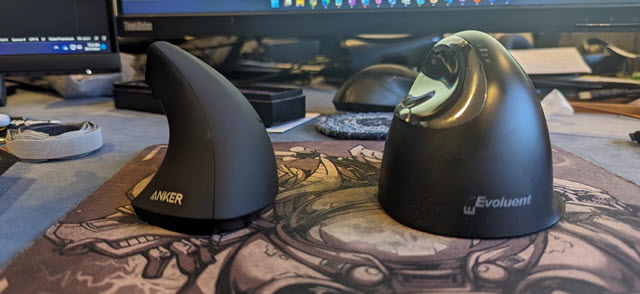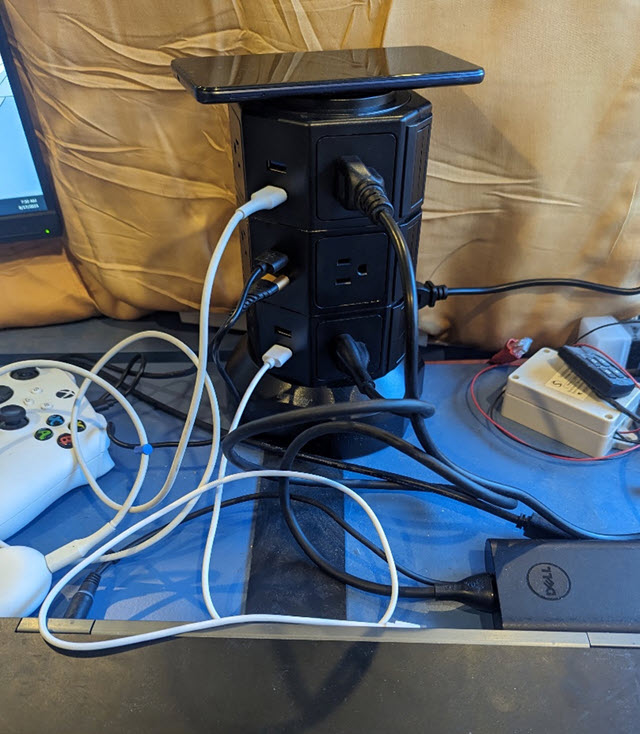- column
- TECHNOLOGY Q&A
Four hardware tips to improve your work experience
This Q&A shows hardware peripherals that create a different user experience.
Related
Shaping AI governance and controls
Simple but effective AI use cases for CAS
How CPAs can use exponential smoothing in Excel for better forecasts
TOPICS
Q: We explore new software ideas that make life efficient, but is there hardware that can make my life easier?
A: We focus so much on what software can do for us that we ignore the physical methods that we use to interact with our devices. This Q&A shows hardware peripherals that create a different user experience. These do not cover the gamut of options, but they do show some fresh ideas you can literally get your hands on.
MONITOR ARMS
Let’s start with a way to make the monitors in your office more usable. I recommend purchasing a single monitor arm for each screen. The MOUNTUP Single Monitor Desk Mount is a great choice for this. This arm can clamp to the edge of desk and get it off the desktop.
If the desk does not have an edge to clamp on a monitor, as is the case with my desk (shown in the previous photo), then you can drill a hole to use the grommet mount. This arm can tilt, rotate, swivel, and adjust height. Because each screen is not attached to a central pole, you can adjust each position independently of the other screens. Some users rotate a screen into portrait mode, which allows them to view the full page of a PDF without having to scroll. After you rotate the physical screen, you can change the screen’s orientation setting in Windows by going to Settings → System → Display. Select the screen you want to rotate, then scroll down to find Display Orientation. Change it to Portrait to have the screen in the correct orientation. If the screen display is upside down on Portrait, then switch to Portrait (Flipped).

VERTICAL MOUSE
I have been using a vertical mouse for the past eight years. The idea is to change the orientation of your hand, wrist, and arm to be in a more natural state. The two types that I have used are the Evoluent Wireless VerticalMouse and the Anker Wireless Vertical Mouse.
The Anker, pictured at left in the photo on the following page, is a simple design with limited features. Some users in my office prefer this model because the angle is in the 50- to 60-degree tilt. My personal preference is the Evoluent, at right in the photo on the following page. It has programmable buttons and a 90-degree tilt, making it completely vertical.
It took me about a week to adapt to having my arm in a different position, but since then, I have not gone back to a normal mouse.

MECHANICAL KEYBOARD
Typing on a mechanical keyboard is a satisfying experience where each key press gives a tactile response. There is an entire subculture for mechanical keyboards with different colored keys, feedback, lights, and form factors, so I am going to just give you a small primer on a couple of important points. The tactile feeling you get from a mechanical keyboard comes from the switch type. The three most common types of switches are cherry or red, brown, and blue.
- Cherry or red: These have a smooth motion on the press. These are also the quietest of the switches.
- Brown: These have a bump that you will feel when you press the key. This is great feedback with each key press.
- Blue: This is the switch I use. I feel the click, and there is a distinct sound with each key press.
A bit of caution though: They are noisy, which is not good for open office layouts.
The keyboard I settled on is the IXCC mechanical keyboard with blue switches, seen in the following photo.
Unfortunately, they do not make the IXCC anymore, but there are equivalents on the market. Testing is the best way to find one that works, so I would head to your local electronics retailer, which will have sample keyboards on display. You can test the feedback of each switch type to see what is most comfortable.
Additionally, these types of keyboards can be customized visually. The keycaps can be replaced to add more personality to your workspace. You can find a variety of styles and designs with a search for Key Cap on Etsy.com.

OUTLET TOWER
I have a plethora of electronics on my desk. I have two laptops, a phone, a tablet, a wireless headset, two different wireless earbuds (one for my phone, the other for my laptop), a rechargeable mouse, and some other miscellaneous electronics. An efficient way to get all these devices plugged in is a power strip tower with USB connections. I like the SuperDanny Power Strip Tower, which you can see in the following photo. It has 12 outlets, 6 USB ports and a wireless charger.
Using this power tower, I can keep everything plugged in to charge and it has a small footprint on my desk. I added some Velcro wraps to keep cables bundled and tidy.

With these four products, I have cleared the space on my desk, made using my mouse more comfortable, found a more satisfying feeling when typing, and organized all the power usage of my devices.
About the author
Wesley Hartman is the founder of Automata Practice Development and director of technology at Kirsch Kohn & Bridge LLP.
Submit a question
Do you have technology questions for this column? Or, after reading an answer, do you have a better solution? Send them to jofatech@aicpa.org. We regret being unable to individually answer all submitted questions.




















